Indium Iron Oxide Sputtering Target Description
The Indium Iron Oxide Sputtering Target from TFM is an oxide sputtering material composed of indium (In), iron (Fe), and oxygen (O).
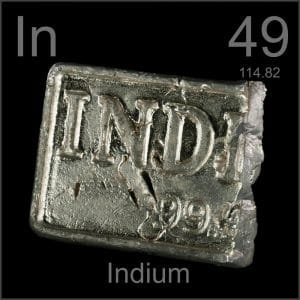 Indium is a chemical element named after the Latin word ‘indicium,’ meaning violet or indigo. It was first mentioned in 1863 and observed by F. Reich and T. Richter, with the isolation later accomplished and announced by T. Richter. The chemical symbol for indium is “In,” and its atomic number is 49. Indium is located in Period 5, Group 13 of the periodic table, within the p-block. Its relative atomic mass is 114.818(3) Dalton, with the number in brackets indicating the measurement uncertainty. Indium compounds are evaporated under vacuum to form thin films in the production of electronics and photovoltaic cells, while pure indium is used as a film layer in semiconductors. Indium’s unique properties make it valuable in a variety of high-tech applications, including touchscreens, LEDs, and advanced alloys.
Indium is a chemical element named after the Latin word ‘indicium,’ meaning violet or indigo. It was first mentioned in 1863 and observed by F. Reich and T. Richter, with the isolation later accomplished and announced by T. Richter. The chemical symbol for indium is “In,” and its atomic number is 49. Indium is located in Period 5, Group 13 of the periodic table, within the p-block. Its relative atomic mass is 114.818(3) Dalton, with the number in brackets indicating the measurement uncertainty. Indium compounds are evaporated under vacuum to form thin films in the production of electronics and photovoltaic cells, while pure indium is used as a film layer in semiconductors. Indium’s unique properties make it valuable in a variety of high-tech applications, including touchscreens, LEDs, and advanced alloys.
Related Product: Indium (In) Sputtering Target
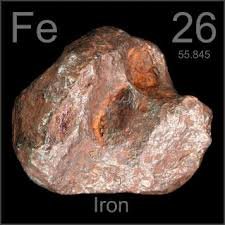 Iron, also known as ferrum, is a chemical element with its name originating from the Anglo-Saxon word “iren” and the Latin word “ferrum.” It has been used since before 5000 BC. The chemical symbol for iron is “Fe,” and its atomic number is 26. Iron is located in Period 4, Group 8 of the periodic table, within the d-block. Its relative atomic mass is 55.845(2) Dalton, with the number in brackets indicating the measurement uncertainty. Iron is a key element in the production of steel and is crucial for various biological functions, including oxygen transport in the blood.
Iron, also known as ferrum, is a chemical element with its name originating from the Anglo-Saxon word “iren” and the Latin word “ferrum.” It has been used since before 5000 BC. The chemical symbol for iron is “Fe,” and its atomic number is 26. Iron is located in Period 4, Group 8 of the periodic table, within the d-block. Its relative atomic mass is 55.845(2) Dalton, with the number in brackets indicating the measurement uncertainty. Iron is a key element in the production of steel and is crucial for various biological functions, including oxygen transport in the blood.
Related Product: Iron (Fe) Sputtering Target
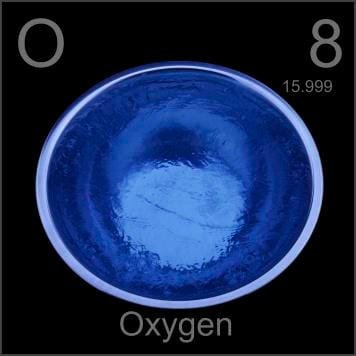 Oxygen is a chemical element named after the Greek words ‘oxy’ and ‘genes,’ meaning acid-forming. It was first mentioned and observed by W. Scheele in 1771, who also later accomplished and announced its isolation. The chemical symbol for oxygen is “O,” and its atomic number is 8. Oxygen is located in Period 2, Group 16 of the periodic table, within the p-block. Its relative atomic mass is 15.9994(3) Dalton, with the number in brackets indicating the measurement uncertainty. Oxygen is essential for respiration in most life forms and plays a critical role in combustion, oxidation, and various chemical processes.
Oxygen is a chemical element named after the Greek words ‘oxy’ and ‘genes,’ meaning acid-forming. It was first mentioned and observed by W. Scheele in 1771, who also later accomplished and announced its isolation. The chemical symbol for oxygen is “O,” and its atomic number is 8. Oxygen is located in Period 2, Group 16 of the periodic table, within the p-block. Its relative atomic mass is 15.9994(3) Dalton, with the number in brackets indicating the measurement uncertainty. Oxygen is essential for respiration in most life forms and plays a critical role in combustion, oxidation, and various chemical processes.
Indium Iron Oxide Sputtering Target Handling Notes
- Indium Bonding: Indium bonding is recommended for the indium iron oxide sputtering target due to its brittleness and low thermal conductivity, which make it less suitable for traditional sputtering methods.
- Thermal Conductivity: This material has low thermal conductivity and is susceptible to thermal shock. Proper handling and bonding techniques are essential to prevent damage during the sputtering process.
Indium Iron Oxide Sputtering Target Application
The Indium Iron Oxide Sputtering Target is utilized in a variety of applications, including thin film deposition, decorative coatings, semiconductors, displays, LEDs, and photovoltaic devices. It is also important for functional coatings, the optical information storage industry, glass coatings for automotive and architectural glass, and optical communication systems, among other fields.
Indium Iron Oxide Sputtering Target Packing
Our Indium Iron Oxide Sputtering Targets are meticulously tagged and labeled externally to ensure efficient identification and maintain strict quality control. We take great care to prevent any damage during storage and transportation, ensuring the highest standards of product integrity upon delivery.
Get Contact
TFM offers Indium Iron Oxide Sputtering Targets in various forms, purities, sizes, and prices. We specialize in high-purity thin film deposition materials with optimal density and minimal grain sizes, which are ideal for semiconductor, CVD, and PVD applications in display and optics. Contact Us for current pricing on sputtering targets and other deposition materials that are not listed.


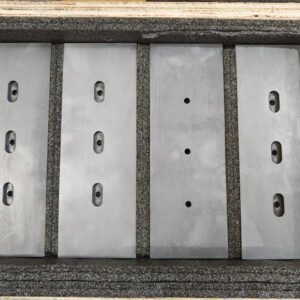
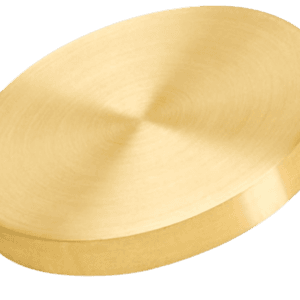
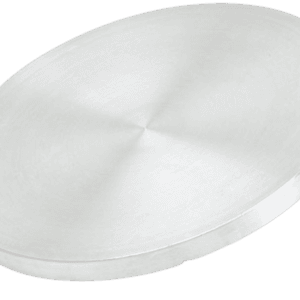
Reviews
There are no reviews yet.